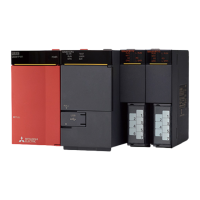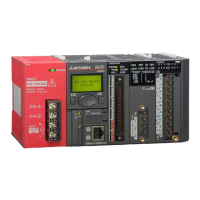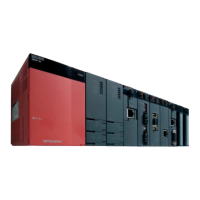330
7 APPLICATION INSTRUCTION
7.3 Program execution control instruction
7.3 Program execution control instruction
Disabling/enabling interrupt programs
DI, EI
Interrupts are usually disabled in CPU module. These instructions enable interrupts in CPU module (EI instruction) or disable
interrupts again (DI instruction).
• DI: Disables the execution of the interrupt program.
• EI: Releases the execution disabled state of interrupt programs.
■DI
• This instruction disables the execution of the interrupt program until the EI instruction is executed, even if the interrupt
cause occurs.
• When the power is turned on or the CPU module is reset, the state in which the DI instruction is executed is applied.
• For the operation of the DI instruction (DI instruction without an argument) when using the interrupt disable instruction with
a specified priority or lower (DI instruction with an argument), refer to
Page 332 Disabling the interrupt program with
specified priority or lower.
■EI
• This instruction releases the execution disabled state of interrupt programs when the DI instruction is executed, and
enables the execution of the interrupt program with the interrupt pointer number enabled by the IMASK instruction.
• For the operation of the EI instruction when using the interrupt disable instruction with a specified priority or lower (DI
instruction with an argument), refer to
Page 332 Disabling the interrupt program with specified priority or lower.
• An interrupt pointer occupies two steps. (In (1) below, I10 is the step 50, X2 is the step 52, and Y10 is the
step 54.)
• If the master control contains the EI or DI instruction, such an instruction is executed regardless of the
execution of the MC instruction.
Ladder diagram Structured text
ENO:=DI(EN);
ENO:=EI(EN);
Even though an interrupt occurs between
the DI and EI instructions, the execution of
the interrupt is held until the processing
between the instructions ends.
DI
EI
In
FEND
Sequence program
Sequence program
Interrupt Program
I10
50
56
60
X2
X5
Y10
Y30
IRET
(1)

